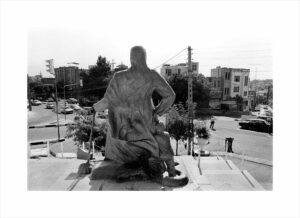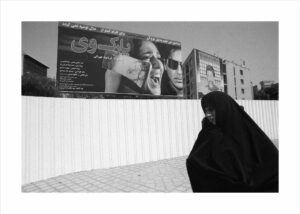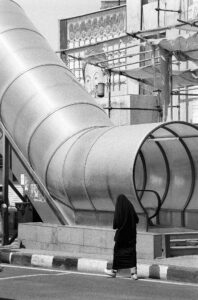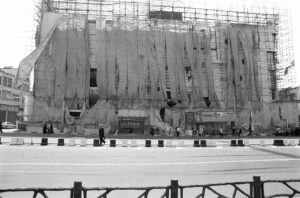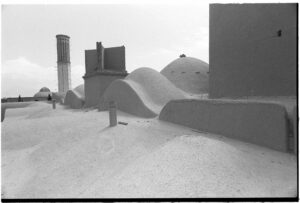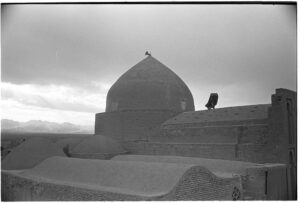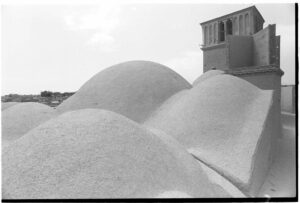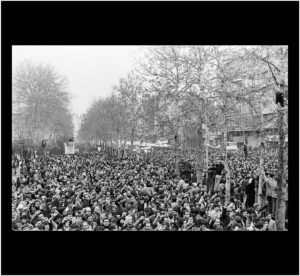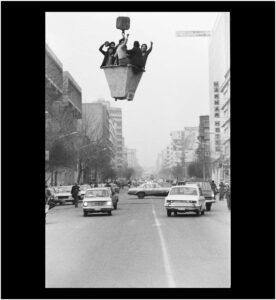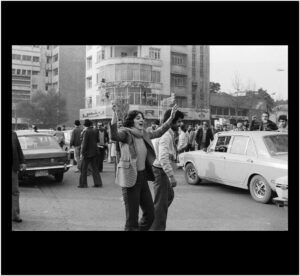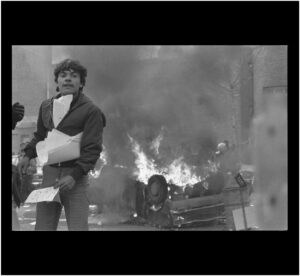Bahman Jalali studied economics and political science at Melli University in Tehran. In 1974, he joined the Royal Photographic Society in Great Britain and dedicated his life to photography. He has photographed the four corners of his homeland, documented its wars and revolutions, pictured its desert landscape, recorded the facial topography of his people. He has shown that he is intimately familiar with the empty stillness of Iran’s villages and cities. Jalali was a founding director of Akhskhaneh Shahr, the first museum of photography in Iran established in 1997. In 1998, Jalali started Aksnameh, a quarterly journal of photography, in collaboration with his wife, Rana Javadi. He had several exhibitions in Iran and abroad, including a retrospective in 2007 at the Antoni Tapies Foundation in Barcelona, Spain, and subsequently at Camera Austria Kunsthaus Graz in 2009.
Excerpts from a Lifework: Photography in Iran 1966 – 2010
Exhibition
2013
Bahman Jalali is one of the most important figures in contemporary Iranian photography. Born in 1944 in Tehran, he first studied economics and political sciences until he turned his attention to photography while he was still studying. Bahman Jalali worked as a freelance photographer. With his black and white photographs he documented the dramatic political events that took place in his country over the years – the Iranian revolution of 1978 – 79, the Iran-Iraq war of 1980 – 88 – as well as the change in urban life and the traditional desert architecture.
The work of Bahman Jalali was hardly known beyond the borders of his country. In 2007, Catherine David dedicated a large single exhibition to him at the Tapiès Foundation in Barcelona and next year, the Sprengel museum in Hanover will present his photographic work on the occasion of the awarding of the Spectrum photography prize to Bahman Jalali. In Summer 2010, Jalali had planned to work for two months as an international guest artist at Villa Romana – on the recommendation of the Iranian artist Nasrin Tabatabai, who lives in Rotterdam. Bahman Jalali died unexpectedly on 15 January 2010, after he had already made the selection of the photographs for the exhibition in Florence.
Bahman Jalali not only left a large photographic record of the history of Iran, he also worked during his lifetime as a collector, historian, researcher and teacher of photography in Iran. He was one of the founders of the first photography museum in his country, started a professorship for photography and worked together with his wife Rana Javadi on the publication of the photography magazine Aksnameh. Rana Javadi will be present at the opening of the exhibition and in the following weeks will create her own photographic project in Florence.
"Bahman Jalali, Fundació Tàpies", Barcelona, 2007
by Catherine David
Interview with Bahman Jalali
We want to thank Catherine David, Rana Javadi and the Fundaciò Antoni Tàpies for giving us the possibility to share this interview, which was first published in the exhibition catalogue: Bahman Jalali, Fundaciò Antoni Tàpies, ACTAR D, Barcelona 2007.
Bahman Jalali (1944 – 2010) is one of the most important figures in contemporary Iranian photography. With his black and white photographs he documented the dramatic political events that took place in his country over the years – the Iranian revolution of 1978 – 79, the Iran-Iraq war of 1980 – 88 – as well as the change in urban life and the traditional desert architecture. Bahman Jalali not only left a large photographic record of the history of Iran, during his lifetime he also worked as a collector, historian, researcher and teacher of photography in Iran. He was one of the founders of the first photography museum in his country, started a professorship for Photography and worked together with his wife Rana Javadi on the publication of the photography magazine Aksnameh.
In this interview with Catherine David, Bahman Jalali spoke of the two forces of photography, that of realism and that of time. “The development of photography has meant that now we really come face to face with our own visual history for the first time; our people, beggars, the wealthy, everything”. The exhibition at Villa Romana exhibits photographs from the Iranian revolution (Tehran, 1978 – 1979), Desert architecture (1977 – 1991) and the views of Tehran (2007) series.
